Frederick Douglass Timeline
1818
Frederick Augustus Washington Bailey was born sometime in February at Holme Hill Farm plantation at Tuckahoe, near the town of Easton, Talbot County, on the eastern shore of Maryland. He was rumored to be the son of Captain Aaron Anthony, the master of his mother Harriet Bailey.
1824
Sent to live in the home of his master Aaron Anthony, overseer of the Wye Plantation of the powerful Lloyd family.
1826
Sent to the Fells Point district of Baltimore to work for Hugh Auld, a ship carpenter and the brother-in-law of Aaron Anthony’s daughter, Lucretia Auld.
1827
Became the property of Thomas Auld, son-in-law of Aaron Anthony, after Anthony’s death. Remains in the household of Hugh and Sophia Auld, where he was taught rudimentary reading skills by Sophia, who ceased the lessons at her husband’s insistence.
1829-30
Worked for Auld & Harrison, a shipbuilding partnership established by Hugh Auld: practices reading and writing in secret.
1831
Bought a used copy of Caleb Bingham’s compilation of speeches, The Columbian Orator, which he memorized to hone his reading and speaking skills.
Learned of the abolitionist movement after reading newspaper articles about John Quincy Adam’s antislavery petitions in the House of Representatives.
1833
Sent back to St. Michaels to work for Thomas Auld.
William Lloyd Garrison founded the American Anti-Slavery Society in Philadelphia.
1834
January Began year as a rented field hand on a farm under the watch of Edward Covey, known as the “slave-breaker.”
August Repelled a physical attack by Covey and was never whipped or beaten again.
1836
Led a failed escape plan from the farm of William Freeland.
Returned to work for Hugh Auld in Baltimore, who had him trained in the trade of ship-caulking.
1837
Joined the “East Baltimore Mental Improvement Society,” a free black debating club, and there met Anna Murray who encouraged him to save money and plan an escape.
1838
Became engaged to Anna Murray.
Escaped from Maryland into Massachusetts by borrowing papers from a free black sailor to take a train from Baltimore to New York City.
Married Anna Murray in New York City.
Moved to New Bedford, Mass., where he changed his name to Douglass.
1839
Subscribed to the Liberator, an abolitionist weekly edited by William Lloyd Garrison.
Heard Garrison, Wendell Phillips, and other abolitionist leaders speak in New Bedford.
Obtained a license from the African Methodist Episcopal Zion Church to preach.
Maria Weston Chapman, and the Boston Female Anti-Slavery Society published the first volume of The Liberty Bell, an annual gift book sold to raise funds for the abolitionist movement.
1841
Spoke on his experience as a slave at a Massachusetts Anti-Slavery Society convention in Nantucket, Mass., after which he was invited to become a paid itinerant lecturer.
Moved his family to Lynn, Mass., where he bought a house.
1842
Hired as a permanent lecturer by the Massachusetts Anti-Slavery Society.
1843
Met the Hutchinson family singers at the New England Anti-Slavery Convention held in Boston.
Successfully opposed a resolution by Henry Highland Garnet at the National Convention of Colored Citizens, in Buffalo, N.Y., urging slaves to rebel.
Joined a group of Garrisonian abolitionists on a speaking tour of the Midwest dubbed the “One Hundred Conventions.”
Beaten by a mob during an outdoor antislavery meeting in Pendleton, Ind.
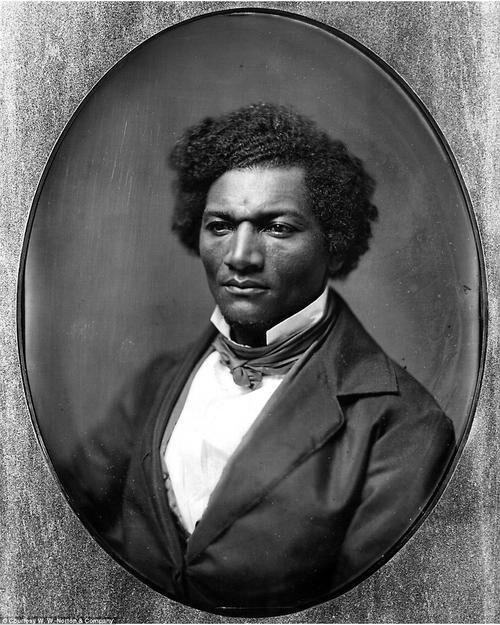 Frederick Douglass, Summer 1843
Frederick Douglass, Summer 18431844
Visited the Northampton Association of Education and Industry, in Florence Massachusetts, for the first time, and met Sojourner Truth. Visited a second time the following April.
Joined the majority at the annual meeting of the American Anti-Slavery Society in endorsing Garrison’s condemnation of the Constitution as proslavery.
Winter Began work on his autobiography.
1845
Published his first autobiography, Narrative of the Life of Frederick Douglass, an American Slave, Written by Himself, which sold 4,500 copies by September.
Sailed from Boston to avoid recapture, leaving his family behind, and beginning a twenty-one month tour of Great Britain and Ireland.
Arrived in Liverpool, England and traveled from there to Ireland where he began a three-month lecture tour.
Sold by Thomas Auld to his brother Hugh for $100.
1846
Toured England, Scotland, Wales, and Ireland with Garrison.
British abolitionist admirers negotiated the purchase and manumission of Douglass from Hugh Auld for the sum of just over $700.
Visited Newcastle-upon-Tyne with Anna and Ellen Richardson, who introduced him to Julia Griffiths, a British woman active in the antislavery cause.
1847
Left Liverpool to return to the United States.
Arrived in Boston and reunited with his family in Lynn.
Used just over $2,000 raised by British and Irish friends to purchase a printing press.
Began his friendship with Gerrit Smith, a wealthy land speculator near Peterboro, N.Y., who had helped found the Liberty party in 1840.
Arrived in Rochester, N.Y., with the intent of establishing a newspaper.
Visited John Brown for the first time at Brown’s home in Springfield, Mass.
Published the first issue of his weekly newspaper, the North Star, in partnership with Martin R. Delany.
1848
The American Missionary Society launched campaign to raise funds to purchase Bibles for slaves.
Purchased number 4 Alexander Street, his first home in Rochester, which he later mortgaged to keep the North Star financially viable.
Attended his first official political gathering, the National Liberty party convention in Buffalo, N.Y., convened by Gerrit Smith.
Attended the Seneca Falls Women’s Rights Convention where he signed the Declaration of Sentiments.
Attended convention in Buffalo, N.Y., which resulted in the formation of the Free Soil party.
1849
British reformer, Julia Griffiths, joined staff of Douglass’s newspaper as its unofficial business manager.
Became the sole editor of the North Star when Delany ended his involvement with the paper.
Local Garrisonians question the North Star’s solvency under Douglass’s&n Management.
1850
As part of the Compromise of 1850, Congress passed a new Fugitive Slave Act.
Attended the first national Women’s Rights Convention, held in Worcester, Mass.
1851
Agreed to merge the North Star with Gerrit Smith’s struggling Liberty Party Paper, accepting Smith’s financial support and his antislavery interpretation of the Constitution.
Broke with Garrison openly over the issue of political action to end slavery, which Garrison opposed.
Published the first edition of Frederick Douglass’s Paper, a pro-Liberty party newspaper, with the motto “All Rights for All!”
1852
Moved his family to a hilltop farm-overlooking downtown Rochester, located 2 miles from the city’s center, on the St. Paul Road.
Delivered “What to the Slave Is the Fourth of July?” at a meeting of the Rochester Ladies Anti-Slavery Society.
Elected secretary of the second Free Soil party convention at the Masonic Hall in Pittsburgh, Pennsylvania.
Campaigned in central New York in support of Gerrit Smith’s successful independent candidacy for the U.S. House of Representatives.
Addressed the Free Democratic party convention, the successor to the Free Soil party, in Pittsburgh and endorsed John P. Hale, its presidential nominee, in Frederick Douglass’s Paper.
1853
Published his novella, “The Heroic Slave,” in the gift book Autographs for Freedom, a collection of antislavery writings edited by Julia Griffiths and sold to raise funds for Frederick Douglass’ Paper.
Organized and hosted the Colored National Convention in Rochester, N.Y. where he was criticized by several black leaders for his industrial school proposal on the grounds that it would promote segregation.
Garrison’s Liberator alluded to Julia Griffiths having caused “much unhappiness” in the Douglass household; Douglass responded heatedly.
1854
Political mentor and benefactor Gerrit Smith resigned his seat in the House of Representatives out of frustration with the legislative process.
1855
Julia Griffiths departed Rochester to return to Great Britain.
Helped found the Radical Abolitionist party at a Syracuse, N.Y., convention.
Second autobiography My Bondage and My Freedom published.
1856
At the urging of Gerrit Smith, attended the Radical Abolitionist party’s nominating convention in Syracuse, N.Y.
Met German immigrant journalist Ottilie Assing for the first time.
Endorsed the Republican party’s presidential ticket as the most electable antislavery ticket, in an editorial in Frederick Douglass’ Paper.
Visited by John Brown in Rochester.
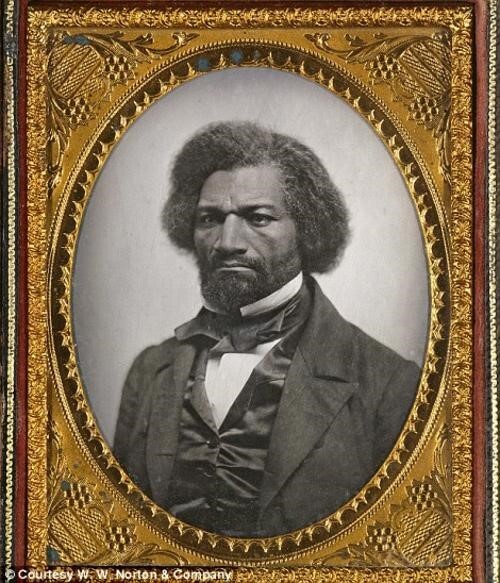 Frederick Douglass, c.1856
Frederick Douglass, c.18561857
Addressed anniversary meeting of the American Abolition Society in New York City, condemning the recent Dred Scott Supreme Court ruling.
1858
John Brown resided at Douglass’s Rochester home for three weeks, planning his raid on Harpers Ferry.
Launched new periodical, the Douglass Monthly, aimed largely at British readers.
Presided over an anti-capital punishment rally in Rochester to protest the execution of Ira Stout, a convicted murderer.
1859
Delivered lecture on “Self-Made Man” for the first of over fifty times during his career while on a speaking tour of Illinois and Wisconsin.
Met with John Brown at Chambersburg, Pa., but chose not to join the plot to attack the Harpers Ferry Arsenal because he believed the plan would ultimately fail.
John Brown attempted to start an armed slave revolt by seizing the U.S. arsenal at Harpers Ferry, Va.
Warned that he might be placed under arrest, following the failure of the Harpers Ferry Raid, Douglass fled from Philadelphia to Rochester and finally to Canada.
Sailed from Quebec and then on to Great Britain, for greater safety, because of his prior close connections with John Brown.
1860
Douglass’s youngest daughter, Annie, died at the age of eleven
Returns to the United States, arriving in Portland, Me.
Due to financial difficulties, Douglass is forced to cease publication of his weekly, Frederick Douglass’ Paper.
Having endorsed Radical Abolitionist Gerrit Smith for president the preceding month, attended a convention in Worcester, Mass., organized by Stephen S. Foster, in an unsuccessful bid to win their backing.
Campaigned extensively in western New York in support of a state equal suffrage referendum.
1861
The Confederacy sent its first diplomatic mission to Europe.
Denounced secession but called on Lincoln administration to make the goal of war emancipation as well as reunion.
Contemplated visiting Haiti to investigate conditions for prospective African American emigrants.
The Civil War officially began with the attack on Fort Sumter in the harbor of Charleston, S.C., by Confederate forces.
Lectured on progress of the war on Sunday afternoons in Rochester’s Spring Street A.M.E. Church; critical of Lincoln for not taking stronger antislavery action.
1862
Lectured in a series sponsored by the Emancipation League of Boston, calling upon the federal government to enlist black soldiers as a means of facilitating Union victory.
U.S. Ambassador Charles Francis Adams warned Washington, D.C. that the British government was seriously considering formally recognizing the Confederate States of America.
Attended celebration of the issuance of the Emancipation Proclamation in Boston.
1863
Traveled extensively in the North to recruit blacks for Union army regiments being raised by Massachusetts.
Resigned as army recruiter after protesting the lack of equal pay and promotion opportunities given black Union soldiers.
Had interviews with Secretary of War Edwin Stanton and President Abraham Lincoln in Washington, D.C.
Returned to Rochester and issued the valedictory issue of Douglass’ Monthly in anticipation of receiving a military commission that never arrived.
1864
Signed public call for a convention to replace Lincoln as the Republican presidential candidate in 1864.
Met with President Lincoln in the Executive Mansion (White House), Washington, D.C., to discuss means to recruit more slaves to run away from masters and enlist in the Union army.
Presided over the National Convention of Colored Men at Syracuse, N.Y., and gave a lukewarm endorsement to Lincoln’s reelection.
1865
Attended Lincoln’s second inauguration in Washington, D.C.
General Robert E. Lee surrendered the Confederate Army of Northern Virginia, effectively ending the American Civil War.
President Lincoln shot by John Wilkes Booth.
Intended to showcase the accomplishments of African-American men and women, Lydia Maria Child’s The Freedman’s Book was published as a primer for freed slaves, of all ages, attending government-sponsored schools in the south.
Thirteenth Amendment ratified.
William Lloyd Garrison published the final issue of the Liberator.
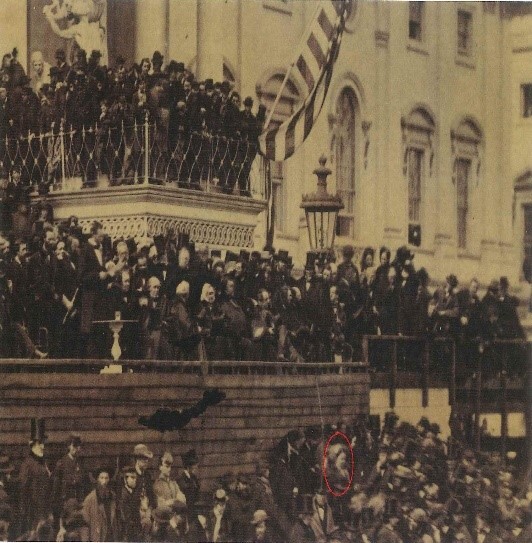 Frederick Douglass at Lincoln's second inaugural, 1865
Frederick Douglass at Lincoln's second inaugural, 18651866
Part of a black delegation that has a contentious interview with President Andrew Johnson at the Executive Mansion, Washington, D.C.
Spoke at a meeting of the American Equal Rights Association in Albany, N.Y.
1867
Congress authorized creation of the Freedman’s Savings and Trust Company (the Freedman’s Savings Bank) to meet the financial needs of the emancipated slaves.
1868
Fourteenth Amendment ratified.
U.S. Chief Justice Salmon P. Chase died.
Publicly endorsed the Republican ticket of Ulysses S. Grant and Schuyler Colfax.
1869
Delivered speech critical of race relations in the United States, “We Are Not Yet Quite Free,” at West Indian Emancipation Day celebration in Medina, N.Y.
1870
Fifteenth Amendment ratified.
The First Force Act enacted to enforce the Fifteenth Amendment.
Moved to the District of Columbia and began editing the New National Era to advance black civil rights as well as other reforms.
Purchased half-interest in the New National Era.
Became sole owner, and publisher, of the New National Era.
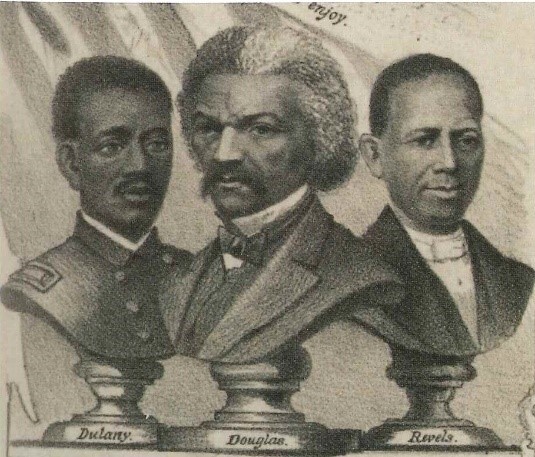 The result of the fifteenth amendment, 1870
The result of the fifteenth amendment, 18701871
Appointed assistant secretary to the Santo Domingo Commission, left New York City for the Dominican Republic.
Members of the Santo Domingo Commission, including Douglass, arrived back in Washington, D.C.
The Third Force Act, known as the Ku Klux Klan Act, passed in Congress. It authorized President Ulysses S. Grant to declare martial law, and use military force to suppress the Klan.
1872
Addressed the National Convention of the Colored People of the United States, held in New Orleans, La., on the topic “The Republican Party Must be Maintained in Power,” and endorsed Grant’s reelection in the New National Era.
Douglass’s home on South Avenue in Rochester, N.Y. burns down, most likely due to arson.
Douglass was nominated by Victoria Woodhull, the first woman to run for president, to run as vice president on the Equal Rights party presidential ticket. Douglass neither acknowledged nor accepted the nomination.
Turned over editorship of the New National Era to his sons.
1873
Colfax, Louisiana massacre of African Americans.
1874
Major General Oliver Otis Howard faced court martial, having been charged with misappropriation of funds intended for black soldiers under his command during the Civil War.
Appointed president of the Freedman’s Savings Bank, and campaigns to keep public trust in the institution.
Believing that the Freedman’s Savings Bank is no longer solvent, Douglass and the bank’s board of trustee voted to close it.
Final edition of the New National Era published.
1877
Appointed United States marshal of the District of Columbia by President Rutherford B. Hayes. He is the first African American to receive a federal appointment requiring Senate approval.
Visited former master, Hugh Auld, on his deathbed in St. Michaels, Md.
1878
Purchased a fifteen acre estate that he and Anna named Cedar Hill in the Anacostia neighborhood of the District of Columbia.
1879
The “Exoduster” movement began as thousands of African Americans from the former Confederate states moved into Kansas and other Midwestern states in an effort to get away from the violence and lack of opportunity they faced in the south.
1881
Appointed recorder of deeds for the District of Columbia by President James A. Garfield.
Published his third autobiography, The Life and Times of Frederick Douglass.
1882
Hired Helen M. Pitts, a graduate of Mount Holyoke College and former teacher of freed blacks in Virginia and Indiana, as a clerk.
Anna Murray Douglass died.
1883
Joined other African American leaders in Washington, D.C., in calling for a National Convention of Colored Men to meet there in September. However, the location of the meeting would be changed to Louisville, Ky.
Supreme Court struck down the Civil Rights Act of 1875. John Marshall Harlan was the only justice to dissent.
1884
Married Helen M. Pitts, a younger, white woman. Their interracial relationship caused a public controversy, as well as disapproval from many members of both families.
Democrat Grover Cleveland elected President of the United States.
1886
Sailed from New York City with second wife, Helen M. Pitts, aboard the City of Rome to travel to England, France, Italy, Egypt and Greece on an extended tour.
1887
Henry Ward Beecher died.
Returned to the United States.
1888
Attended the National Republican Party Convention, meeting in Chicago, Ill.
Republican Benjamin Harrison defeated incumbent Grover Cleveland in the presidential election.
1889
Victor Schoelcher’s biography of Toussaint L’Ouverture was published in France.
Accepted President Benjamin Harrison’s appointment as United States minister resident and consul general to Haiti.
Presented his diplomatic credentials to the government of Haiti.
 Frederick Douglass in Haiti, c.1890
Frederick Douglass in Haiti, c.18901890
Democrats swept the midterm election and regained control of the United States House of Representatives for the first time since the Civil War. The Republicans also lost seats in the Senate.
1891
Interviewed by Irvine Garland Penn for his book The Afro American Press and its Editors.
Haitian government denies United States permission to lease the port of Mole Saint-Nicolas as a refueling station.
Returned to the United States, by way of New York City, on leave from Haitian post. Resigned in August.
1892
Endorsed renomination of Benjamin Harrison for president.
Attended the Republican Convention, in Minneapolis, Minn., as a non-delegate and called for the inclusion of an anti-lynching plank in the Republican party platform.
Campaigned for the Republican ticket.
Accepted appointment from the government of Haiti to serve as commissioner of the Haitian pavilion at the World’s Columbian Exposition.
1893
Joined Ida B. Wells, and other activists, in protesting the lack of African
American representation at the World’s Columbian Exposition.
World’s Columbian Exposition opened in Chicago.
The World’s Columbian Exposition closed.
1895
Died at his Cedar Hill home in Washington, D.C. after attending a women’s rights convention.
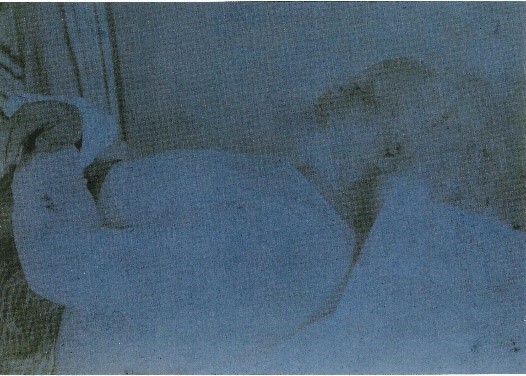 Frederick Douglass, 1895
Frederick Douglass, 18951903
Helen Pitts Douglass died in Washington, D.C.
